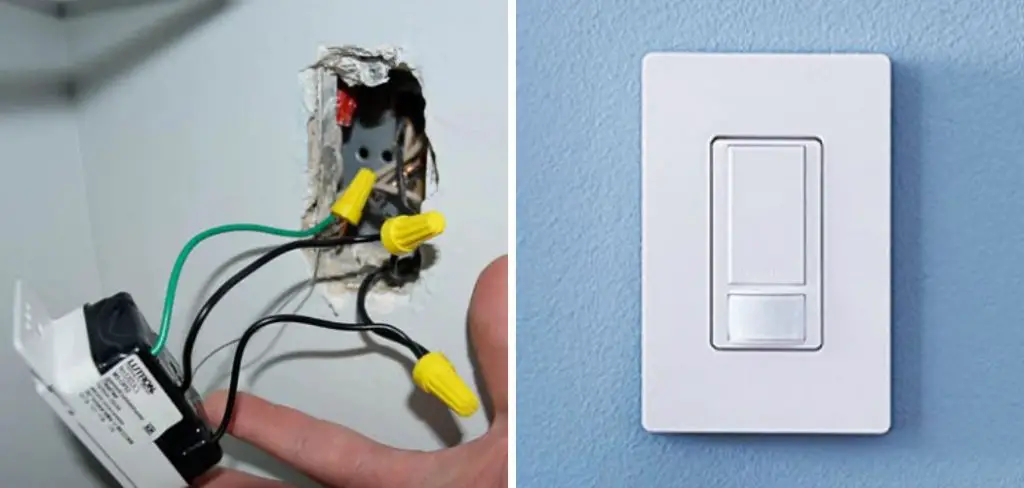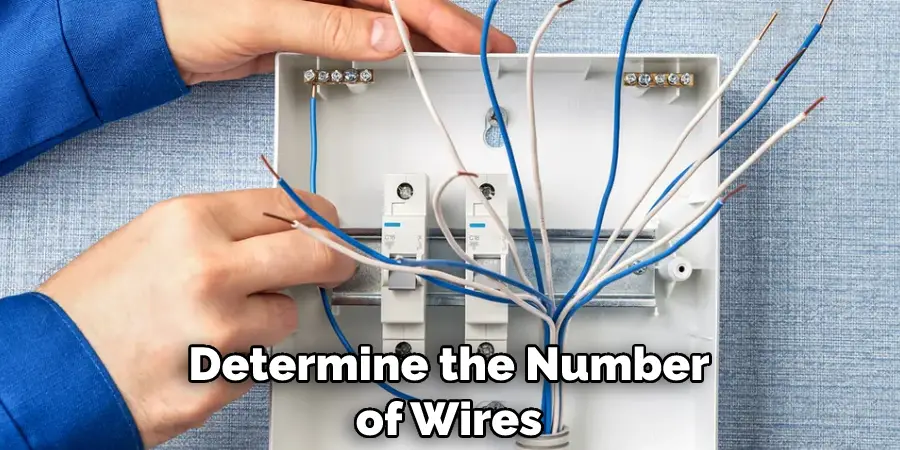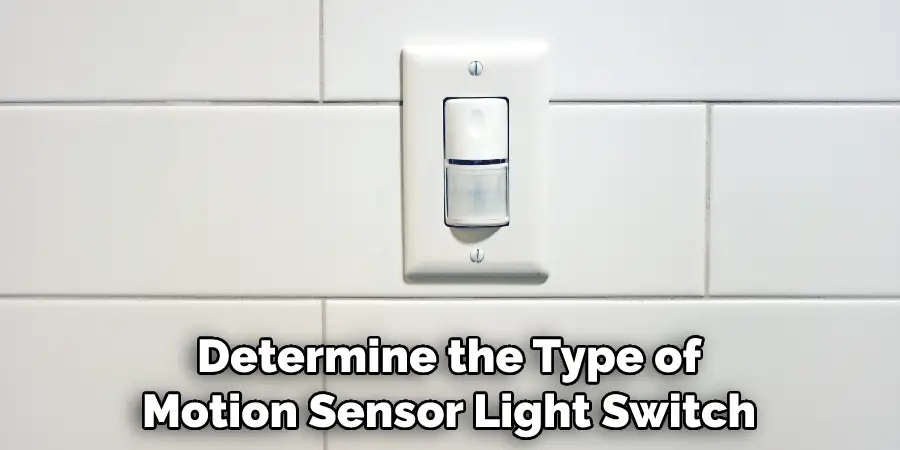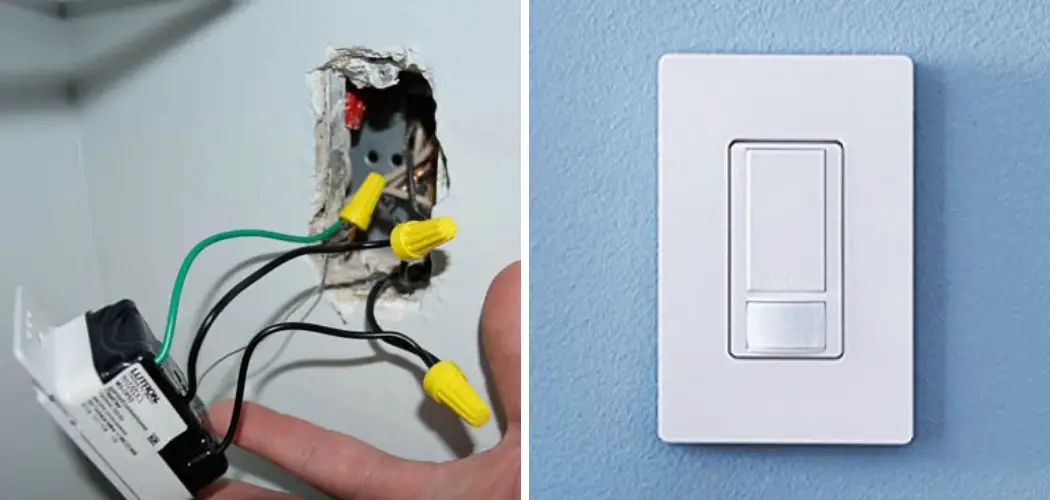Making sure your home is both secure, and energy-efficient can be a daunting task. Installing a motion sensor light switch is one of the easiest ways to make sure that your outdoor lighting system is running efficiently while keeping any unfortunate incidents at bay.

In this blog post, we’ll cover how to wire a motion sensor light switch and answer some frequently asked questions about these ultra-convenient devices. So if you’re considering upgrading or replacing an existing light switch with a motion sensor model, read on for all the tips and tricks for ensuring success!
Step-by-Step Guidelines on How to Wire a Motion Sensor Light Switch
Step 1: Shut Off Power to the Circuit You’re Working on
Before getting started, make sure all of the power is turned off to the light switch. You may also need to turn off the power at your electrical panel if necessary. You can identify the correct breaker by locating which one corresponds to the switch being worked on.
Step 2: Remove the Existing Light Switch
Remove the screws that hold the current light switch in place using a flat-head screwdriver. Once these have been removed, you can pull out the old switch and separate it from its wires.
Step 3: Secure the New Motion Sensor Light Switch
Connect all of the wires from the existing switch to the new motion sensor light switch. This will normally involve connecting black to black, white to white, and ground (green or bare) to ground.
Step 4: Adjust the Settings of Your Motion Sensor Switch
Once the wiring is complete, you may need to adjust a few settings on the motion sensor switch before it’s operational. These settings may include sensitivity and the time delay before the switch will turn on or off.
Step 5: Test Your Motion Sensor Light Switch
Once you’ve adjusted your settings, make sure to test out the motion sensor light switch before you reinstall it in its casing. Testing consists of walking by or waving your hand in front of the sensor to make sure it’s working properly.
Step 6: Reinstall Switch and Turn on Power
Once you’ve tested your motion sensor light switch, reinstall it into its casing with the screws you removed earlier, and then turn the power back on at your electrical panel. You may need to wait a few moments while the breaker is reset.
Congratulations, you have successfully installed your motion sensor light switch! Now that you know how to wire a motion sensor light switch, you can enjoy the energy-saving benefits and security of having one in your home or business.
Some Other Tips and Tricks to Wire a Motion Sensor Light Switch
1. Make sure to check your local regulations and codes before beginning the installation process. It’s also important to consult with a professional electrician if you’re unsure of what to do.

2. When wiring your light switch, be mindful of the black wire, which is known as the hot wire. This carries an electrical current, so make sure it is properly insulated to prevent any accidents.
3. Be aware of the load capacity of your motion sensor light switch, as this will determine how much electricity can be used by the switch and how many lights it can power at one time.
4. Make sure to insert a ground wire into your light switch to ensure proper electrical grounding.
5. When in doubt, always consult a professional electrician for help with wiring your motion sensor light switch. This is the best way to ensure your and your home’s safety.
6. After installation, test out your new motion sensor light switch before using it regularly to ensure it is connected properly and working as intended.
By following these tips and tricks, you can rest assured that your motion sensor light switch will be installed safely and correctly. With a bit of patience and attention to detail, wiring your new light switch should be a breeze!
Things to Consider for Wiring Motion Sensor Light Switch
1. Determine the Number of Wires in the Box:
To wire a motion sensor light switch properly, you need to determine the number of wires in your existing wall switch box and select a compatible type. If it has two black wires, it most likely has two travelers.

2. Choose a Compatible Motion Sensor:
When choosing a motion sensor, you will want to ensure it is compatible with your current wiring setup. Motion sensors come in several different types and are designed for specific voltage systems.
3. Install the Motion Sensor:
Once you have chosen the correct model, you can begin installing it by carefully following the instructions that came with it. Make sure to disconnect the power to the circuit before installing.
Connecting the red wire from the motion sensor to the black wire of your existing wiring setup should be done first. Then, depending on your model, you will have to connect either two additional wires or three additional wires. Finally, attach the ground wire and screw in the mounting plate.
4. Turn Power Back on:
Once all of the wires are connected, you can turn the power back on and test your new motion sensor light switch. If everything is connected properly, the lights should turn on when motion is detected and off when there is no movement.
5. Troubleshooting Tips:
If you have trouble getting your motion sensor to work, try a few troubleshooting tips. Check all of your connections and make sure they are secure. Also, check to see if the motion sensor is in a location that will detect movement properly. Finally, it may be necessary to adjust the sensitivity of the sensor if it is not detecting movement accurately.
By following these considerations, you can easily wire a motion sensor light switch to your home. With the right setup and care, this device can provide extra safety and convenience in dark or low-lit areas of your home.
Precautions to Wire a Motion Sensor Light Switch
1. Prior to beginning any wiring project, it is important to read the manufacturer’s instructions thoroughly and determine the type of motion sensor light switch you are installing. Some types require a direct connection between the load and power source, while others use remote loads that are wired to a separate device.

2. Ensure electricity has been shut off at the circuit breaker before beginning any electrical wiring project in order to avoid serious injury or property damage.
3. Take extra precautions when connecting wires to a motion sensor light switch, as these switches often require more than two connection points. Do not attempt this type of complex wiring unless you are experienced and comfortable doing so.
4. Use a voltage tester to verify that the circuit is off before removing or installing any wiring components.
5. Have adequate lighting in the work area to ensure you can see what you’re doing and do it safely.
6. Wear insulated rubber gloves and eye protection when working around electricity, as this will help protect against accidental electrical shock.
7. After completing the wiring project, test the motion sensor light switch to ensure it functions correctly before restoring power to the circuit.
Taking all of the above precautions when wiring a motion sensor light switch ensures that your project is completed successfully and safely. Following this advice will also help to minimize the risk of injury or property damage.

Frequently Asked Questions
What Are the Benefits of Wiring a Motion Sensor Light Switch?
Wiring a motion sensor light switch can save energy and money, as well as provide convenience and safety. By turning on lights only when needed, you can reduce your energy costs while also increasing the security of your home.
Motion sensors can be used to turn on outdoor lights, which will help to deter intruders or illuminate pathways, making it easier and safer to come home at night. They can also be used indoors, such as in a hallway or stairwell, to light up the area when motion is detected.
What Types of Motion Sensors are Available?
Motion sensors are available in a variety of styles, from simple single-switch models to more advanced multi-sensor systems. Most motion sensors will detect movement within a certain range, but more sophisticated models can be set to detect specific types of movement or sound.
Some motion sensors are also equipped with night-vision capabilities. Choosing the right type of motion sensor for your needs is important, as not all models will be suitable for every application.
Are Motion Sensors Complicated to Set Up?
Setting up a motion sensor is relatively straightforward, though it does require some basic electrical knowledge. If you are unfamiliar with the process, it is best to consult a licensed electrician or the manufacturer’s instructions. Once the wiring is complete, and the sensor is connected to a power source, you should be able to set up and adjust any settings you need with relative ease.

Conclusion
Wiring a motion sensor light switch is a great way to add some convenience and safety to your home. The installation process may seem complicated, but it can be completed relatively simply with the right supplies, knowledge, and care. Constantly double-check connections and operate in a well-ventilated space. Don’t hesitate to seek professional help if you feel overwhelmed or uncomfortable.
By taking these steps, you can rest assured that your wiring work will be safe and effective for years to come. Now that you know how to wire a motion sensor light switch, you’re ready to upgrade your home both functionally and aesthetically. So get out there, turn the power off, connect the wires securely, test it out thoroughly, and enjoy your new setup!

